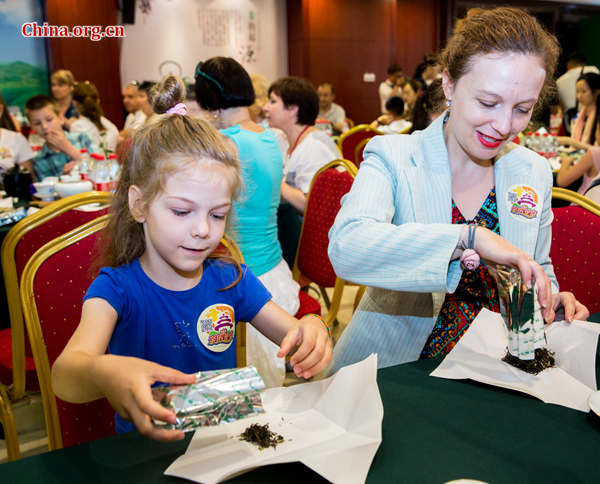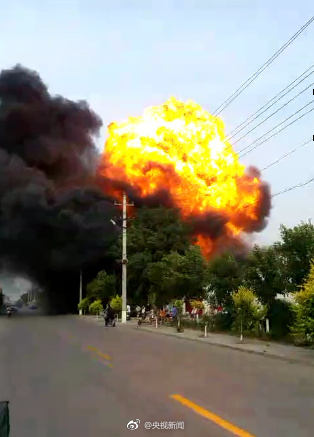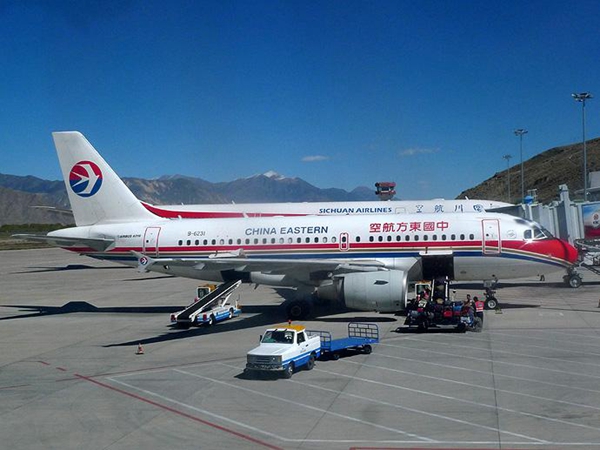|

|
|
An expat and her child mix tea leaves with jasmine flowers at the latest session of the “Beijing Salon – Experience Beijing” on June 17, 2017. [Photo/This Month magazine]
|
Up to 100 expats working in Beijing attended an annual tea party at the city’s well-known Maliandao “tea street” on June 17, despite the sweltering heat that had lingered for days.
This tea party was the fourth to be held by the Beijing municipal government and also the latest in the “Beijing Salon – Experience Beijing” series of activities, which also feature Peking opera, martial arts, Chinese kites, and the sampling of Beijing’s local tourism resources, among others.
It highlighted scented tea and floral art, which locals insist is a good match with traditional tea culture. In comparison, previous three tea parties focused more on the various types of tea grown in China, the appreciation of tea sets and the traditional process of brewing different teas.
Tea is a very important part of Chinese culture, so that holding a tea party each year can help popularize it among expats, according to the organizer.
Most attendees were glad to learn how tea is the most popular drink across China, as well as being widely consumed elsewhere in the world, although with different traditions.
The expats agreed that jasmine tea, which is the most popular type in Beijing, was the tastiest. During the activity, they had a chance to make it by mixing jasmine buds and petals with green tea leaves in a 3-10 ratio.
The Ukrainian Embassy in Beijing sent a handful of people, including the diplomats’ children, to the tea party. Among them was Consul Lilia Somoilova. She said she had long been interested in Chinese culture. In her understanding, Chinese tea, especially green tea, tends to be plainer, but purer than that produced in Western style.
This simplicity and purity, she said, could also be found in Chinese floral arrangements and traditional Chinese music.


